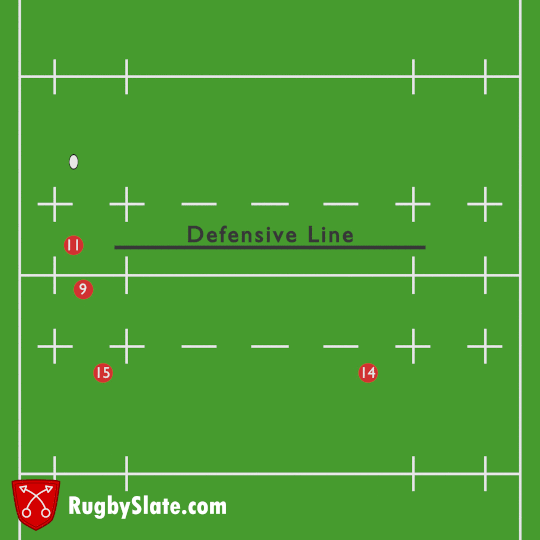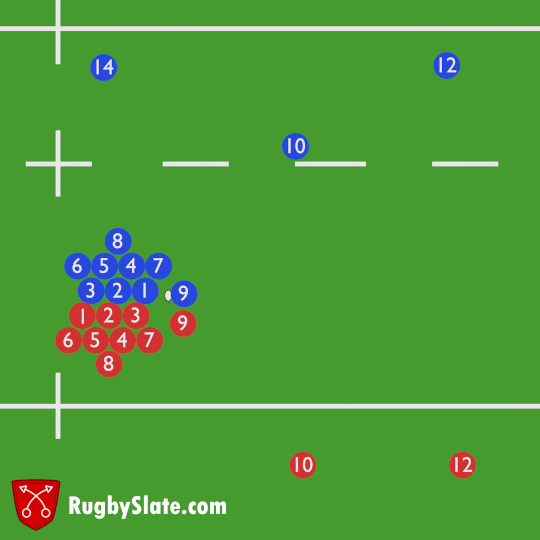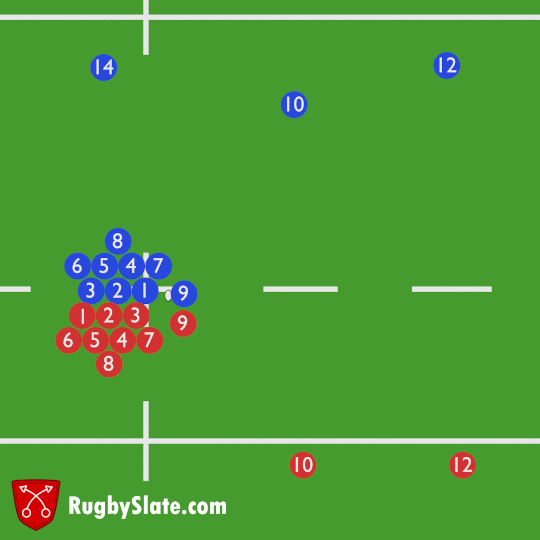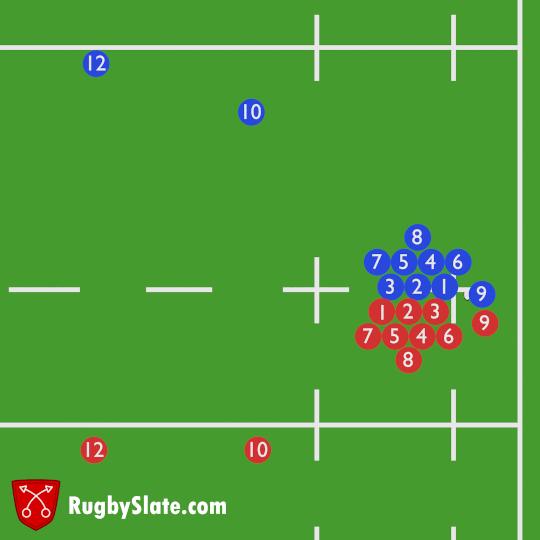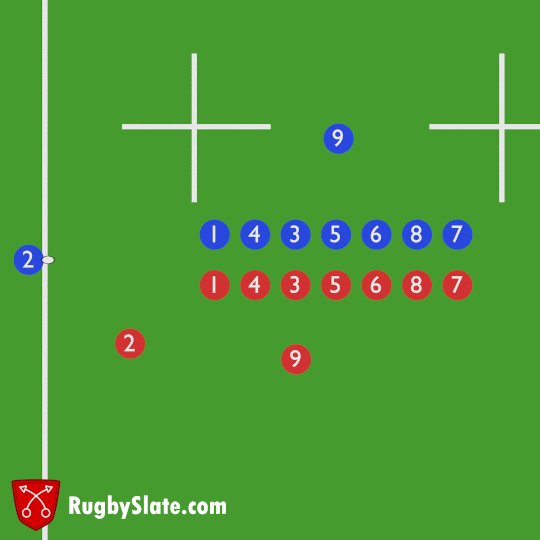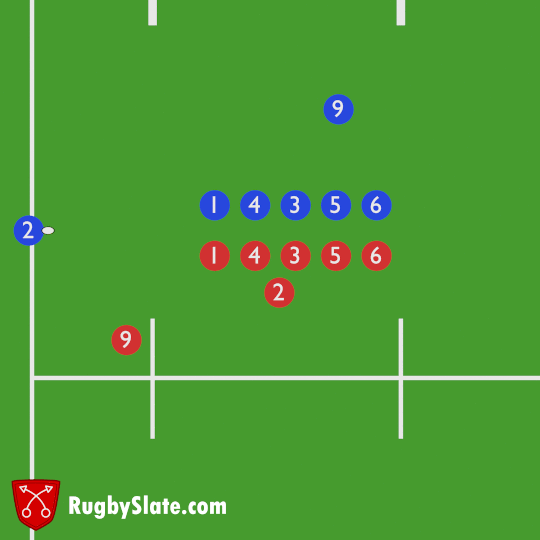Scrum Half Defensive Role
Probably one of the most forgotten about defensive roles in rugby is of the scrum half. A good scrum half will be able to defend in almost all positions. They will be able to defend the back field when one of the back three is caught up, they will be able to join the defensive line and defend with the tea and they will be able to tackle forwards near breakdowns. However a scrum half does have some specific roles when in defence.
Open Play
In open play, the 9 typically works as a sweeper behind the defensive line. They are there to cover any small breaks in the line or short kicks. This role can be seen as an extension of the backfield cover of the back 3. The scrum half should mirror where the ball is and be ready for any line breaks or kicks. At a break down, a 9 should look at if there are any overlaps on one side and join the line to cover these if.
The scrum half should have good knowledge of how the back three defend. If one of them gets caught up in the play and are unable to cover their position, the 9 should step in and work in the pendulum until the player can come back to their position.
Scrums
For a scrum half, defending a scrum can be done in roughly three ways. Firstly they can follow the ball around and put close pressure on the 8 and 9. As long as the scrum half stays behind the ball and the flanker’s feet they are onside. The moment the ball is out they can go to tackle to ball carrier. This can work very well when the opposition scrum half is passing the ball to their left as they have to pass the ball across the defending scrum half. The defending scrum half can disrupt the pass by tackling the 9 or even just grabbing an arm.
Alternatively, a scrum half can defend the scrum by not focusing too much on the opposition 9 but the 10 instead. The scrum half can drift away from the scrum and once the ball is passed, they can rush up on the 10. This type of defence should be used when the 10 is probably going to kick or when the 10 is not good at getting the ball away quickly. The scrum half still has the role of defending close to the scrum first, only going to the 10 when it is passed.
The final way to defend a scrum for a scrum half is by not following the ball round and instead going to the back foot. A scrum half would do this so that they are able to cover to the left of the scrum. This is commonly used when the 9 needs to act as the sweeper and is not needed on the right. This position gives the 9 the most freedom to see the play and defend where needed.
Lineouts
At a lineout a scrum half has defensive options to pick from. The 9 can stand in the “traditional” place for a scrum half around the middle of the lineout. This is a good option if the lineout gets stolen and the ball tapped back. This position gives the 9 the best chance of retrieving the ball and getting it to the backs.
Alternatively, the 9 and the hooker can swap positions. The scrum half will defend the 5m channel and the hooker defend behind the lineout. This is best used when the opposition is going to catch and drive. The hooker being in the scrum half’s position allows them to enter the maul straight away. If a maul does form at a lineout, the scrum half should defend the side of the maul in-case of any attacks around the fringes.
General Advice
In open play:
• The defensive line takes priority.
• Covering for the back 3 comes second (see this article to learn more)
• If all these are covered, then become a sweeper.
At set pieces:
• Defend the close, immediate threat first
• Position yourself ready for where the ball will likely go.
• Apply pressure on 8, 9 and 10 where possible.

